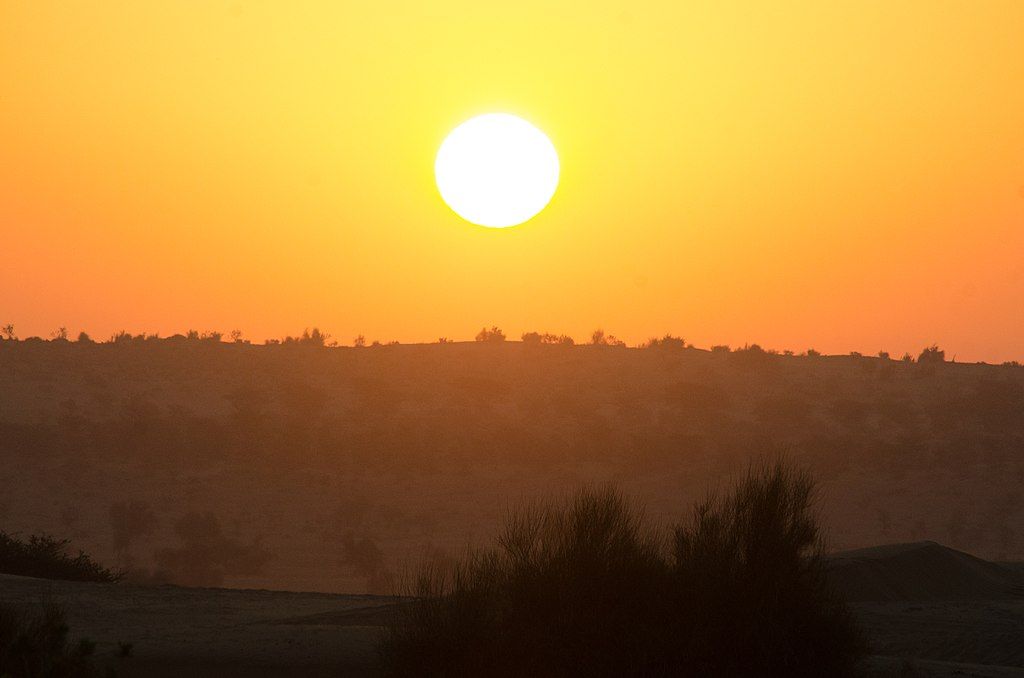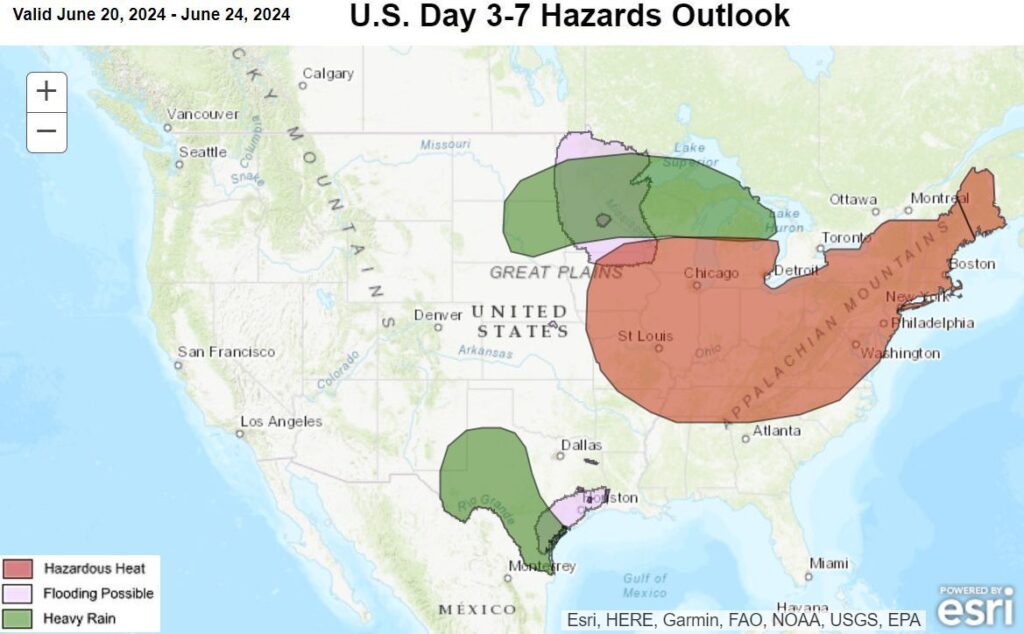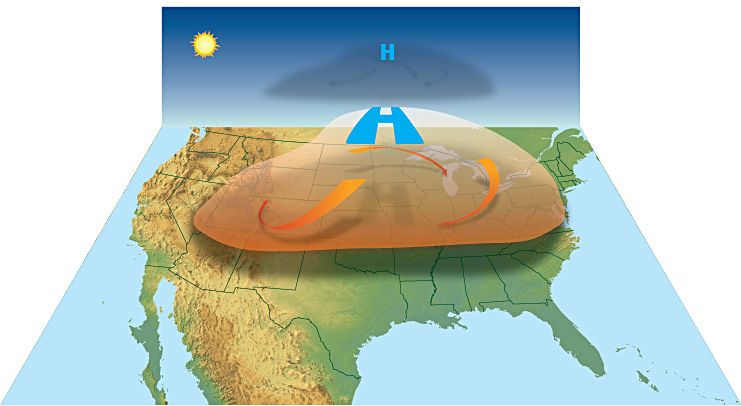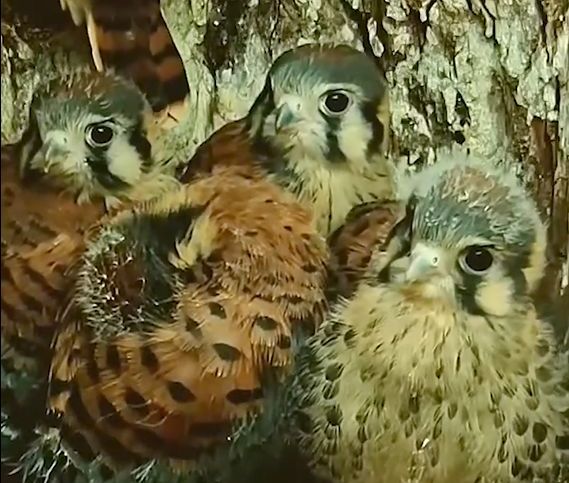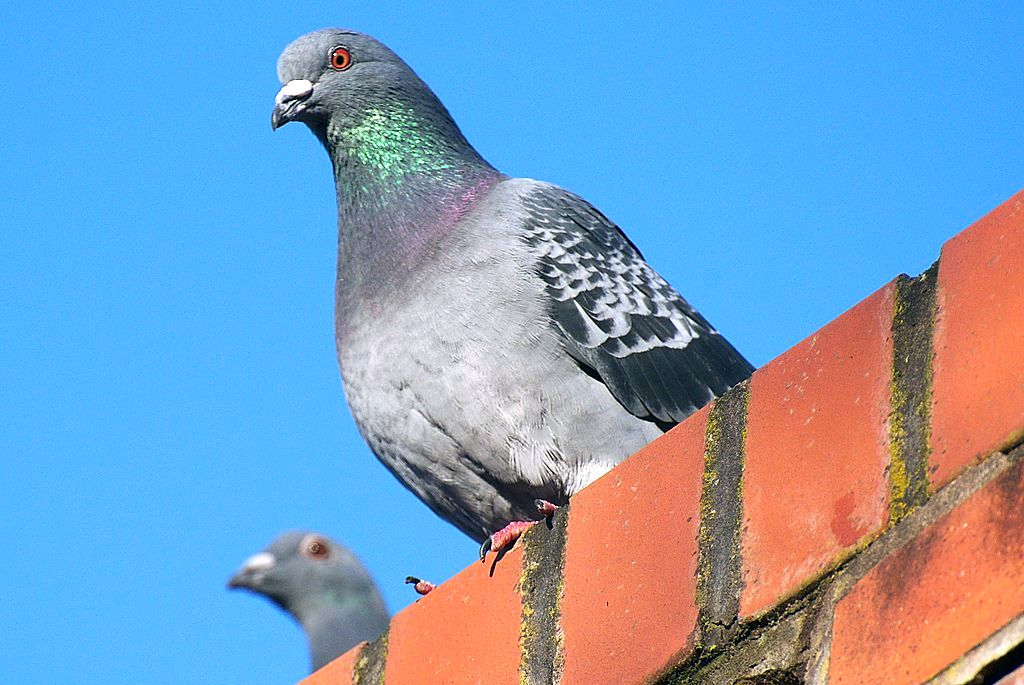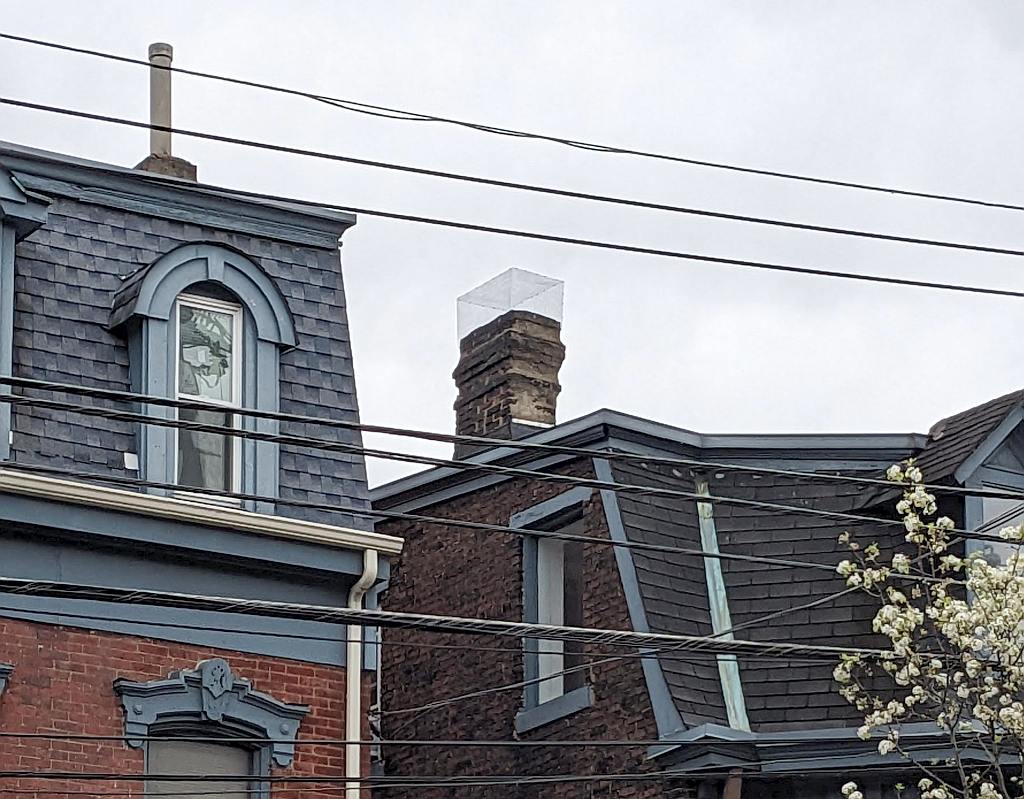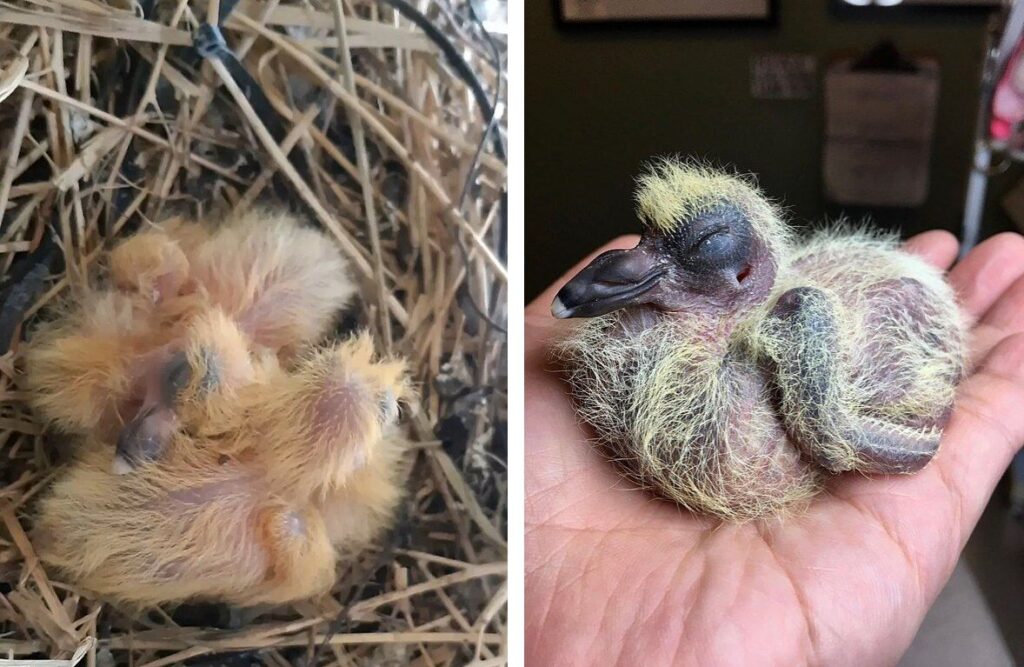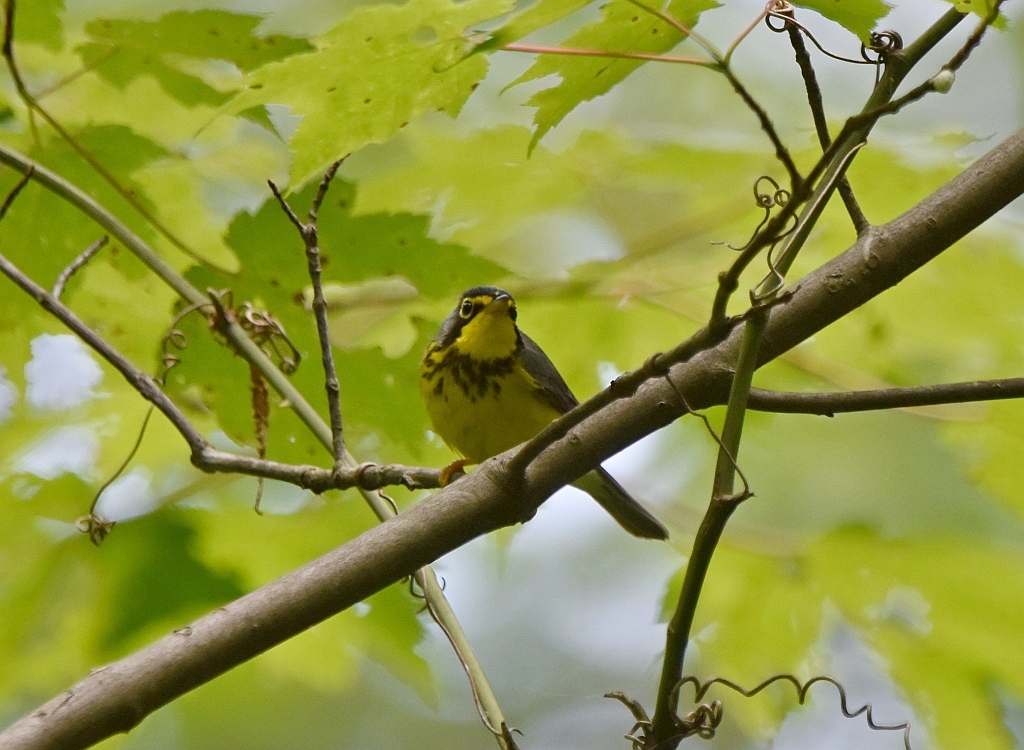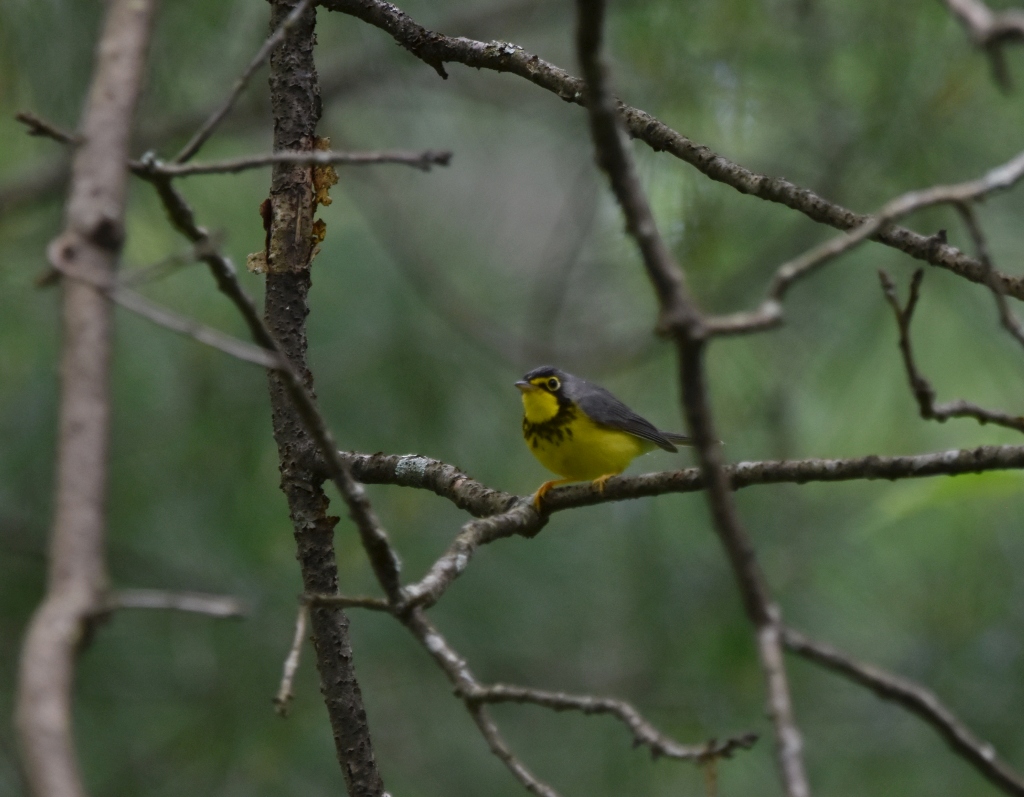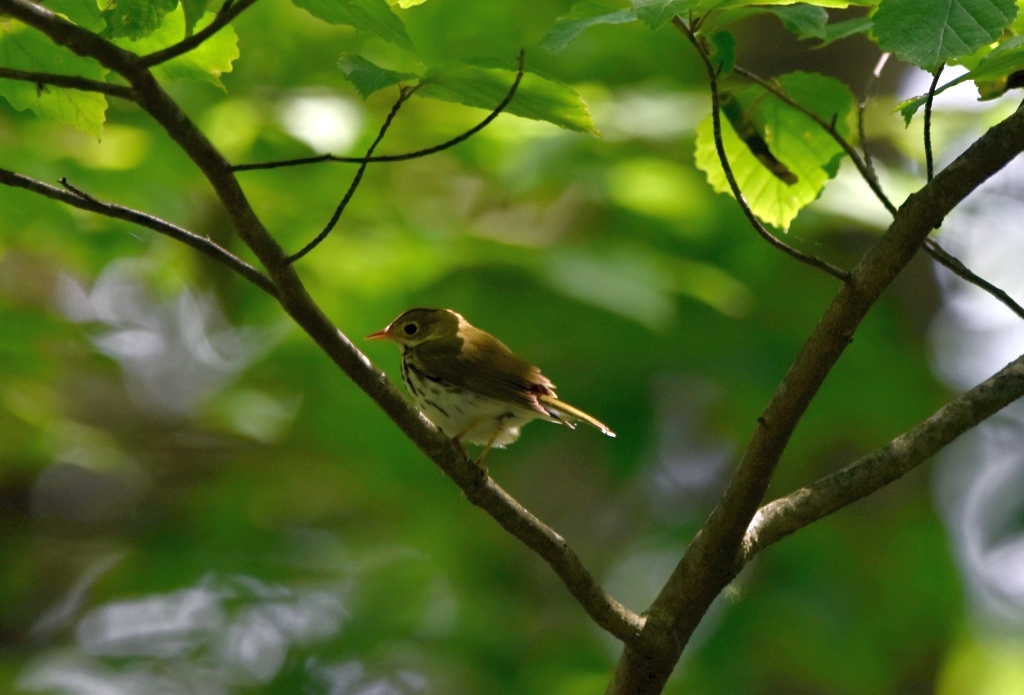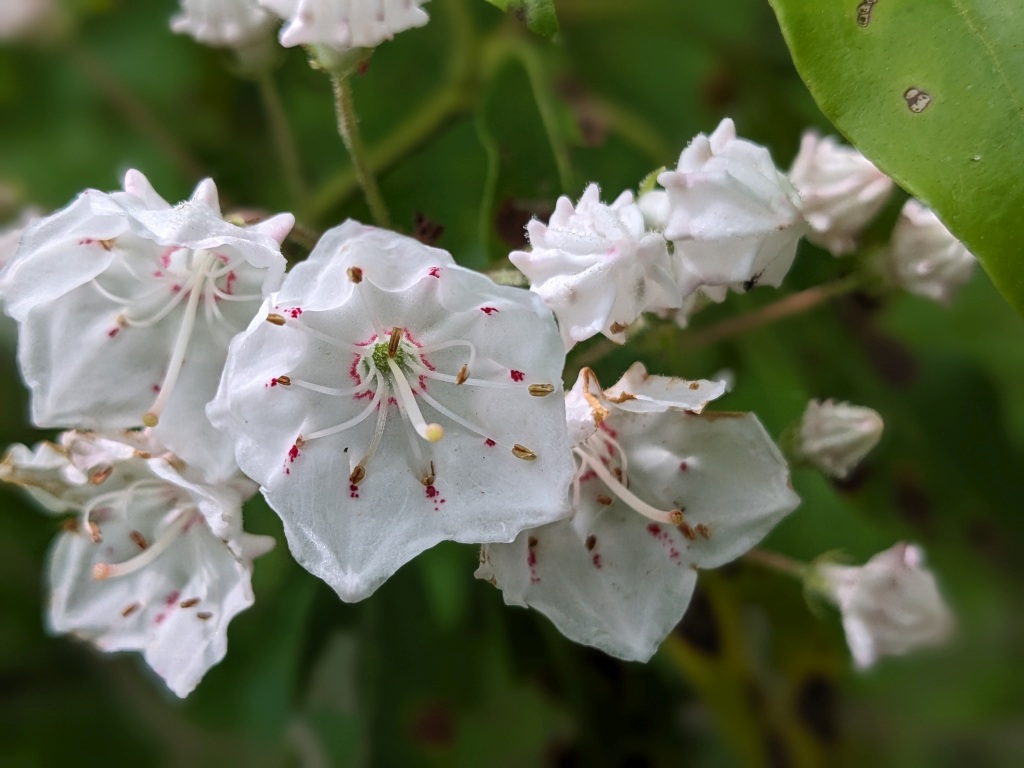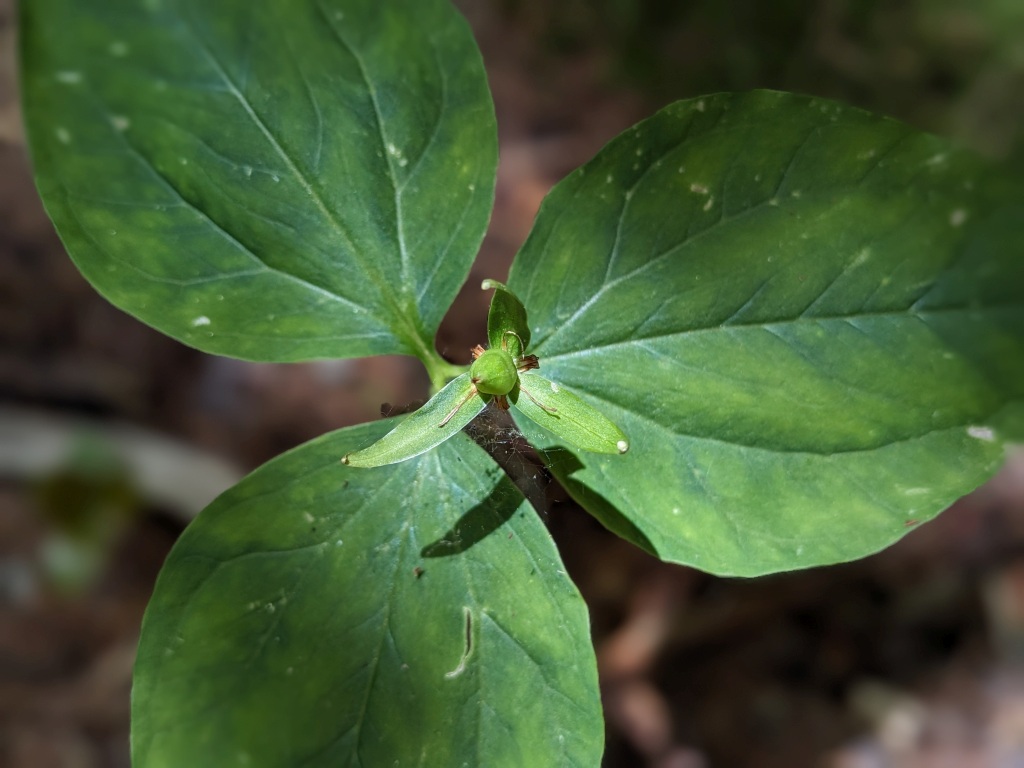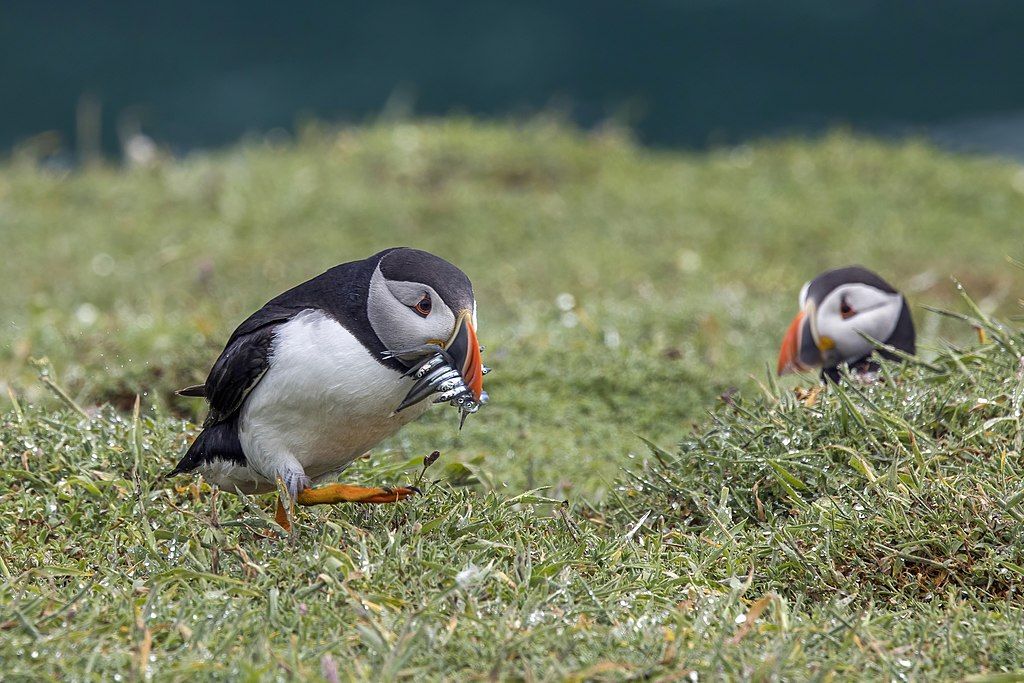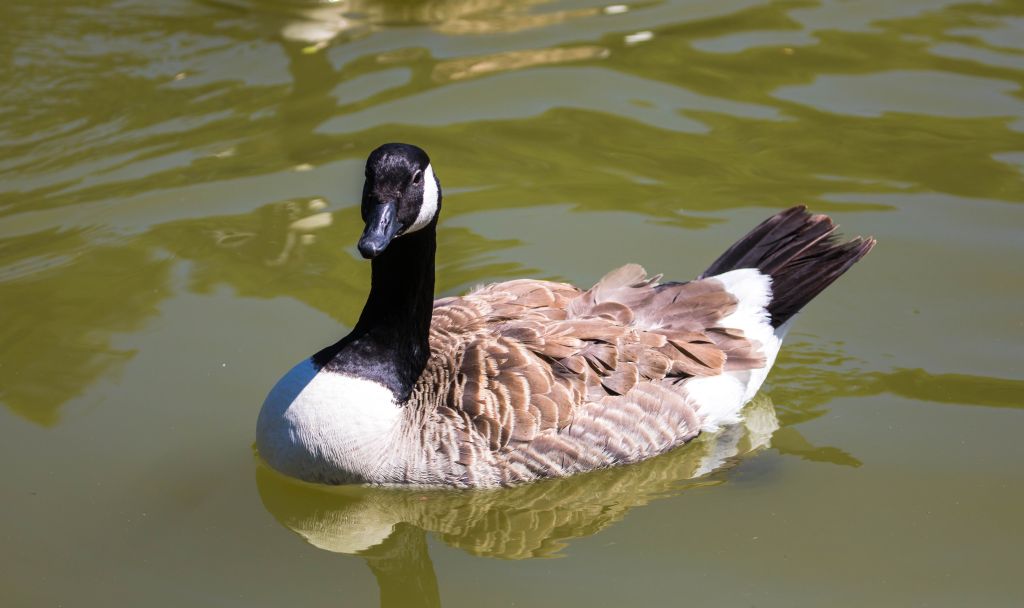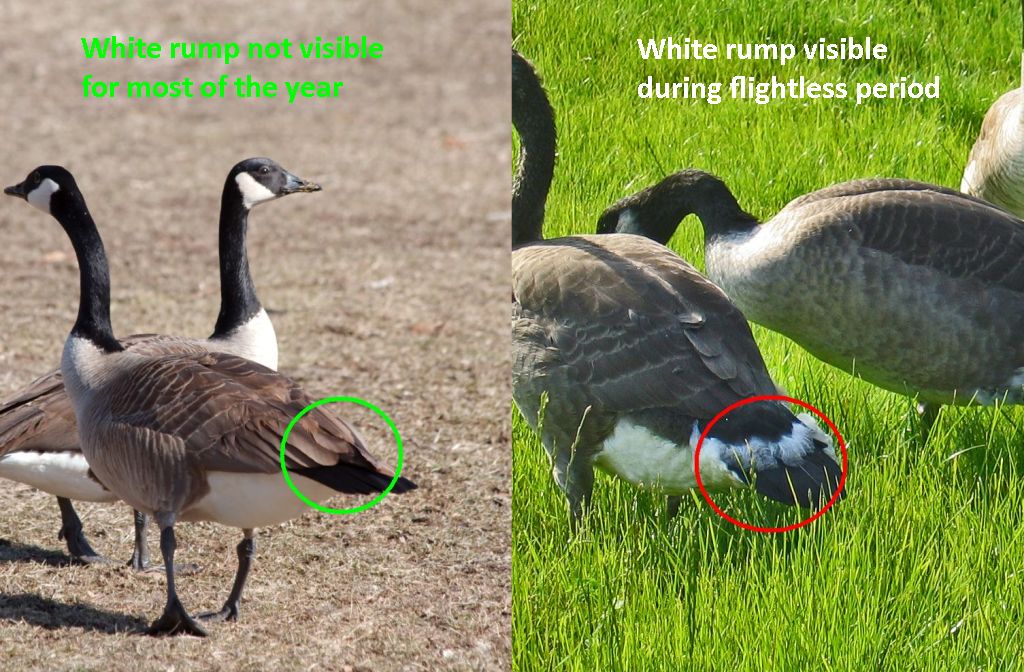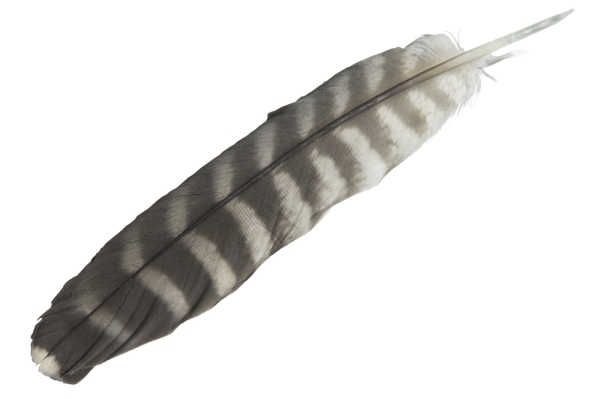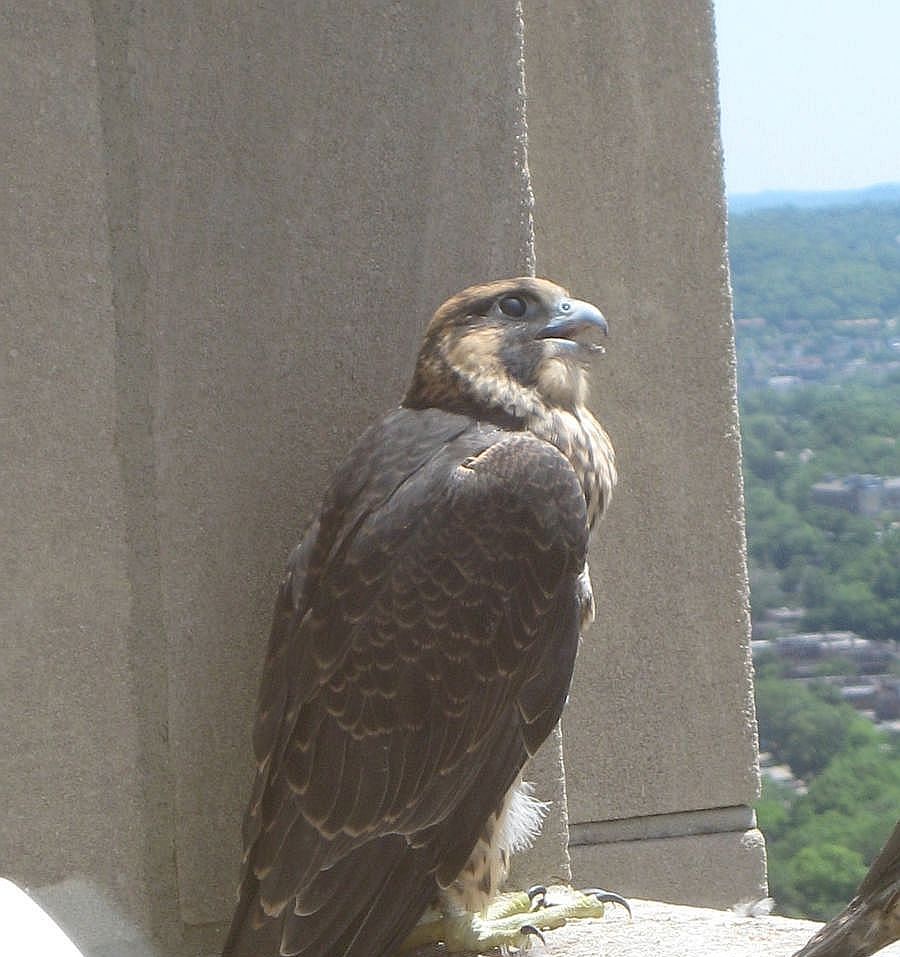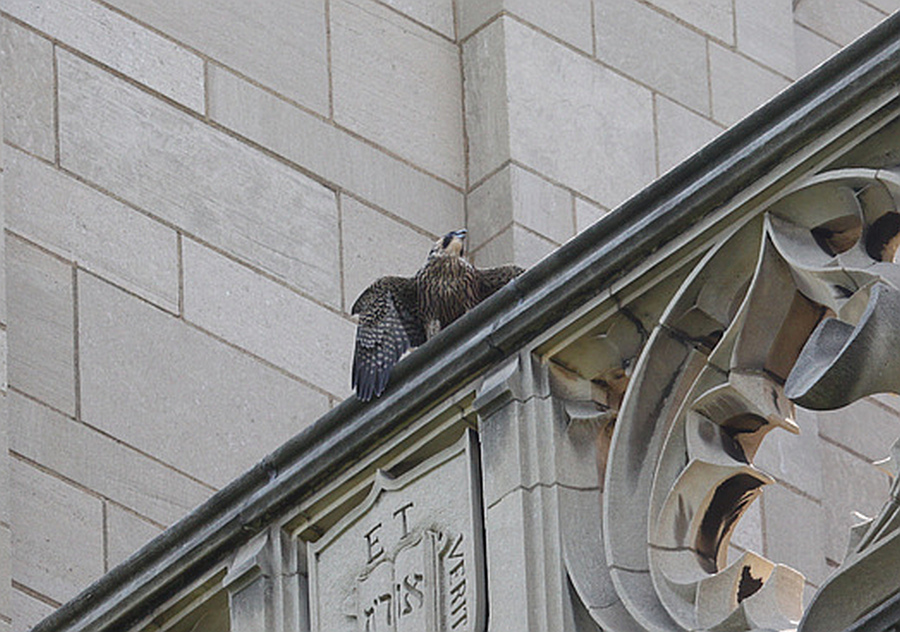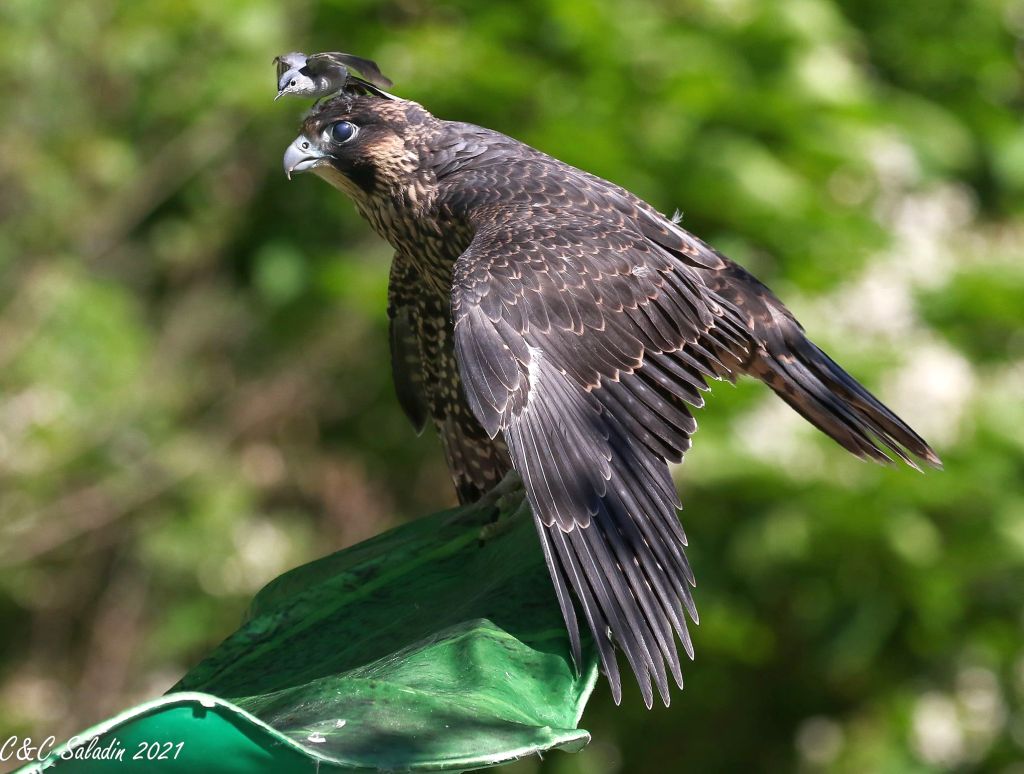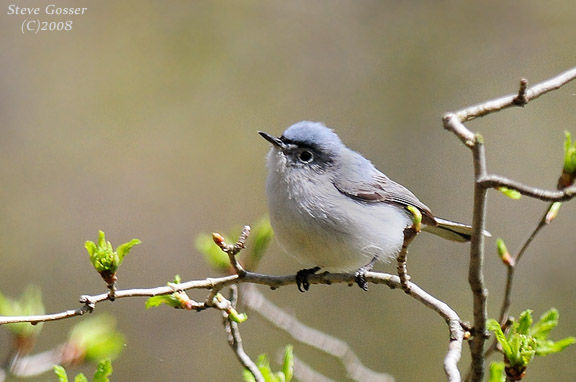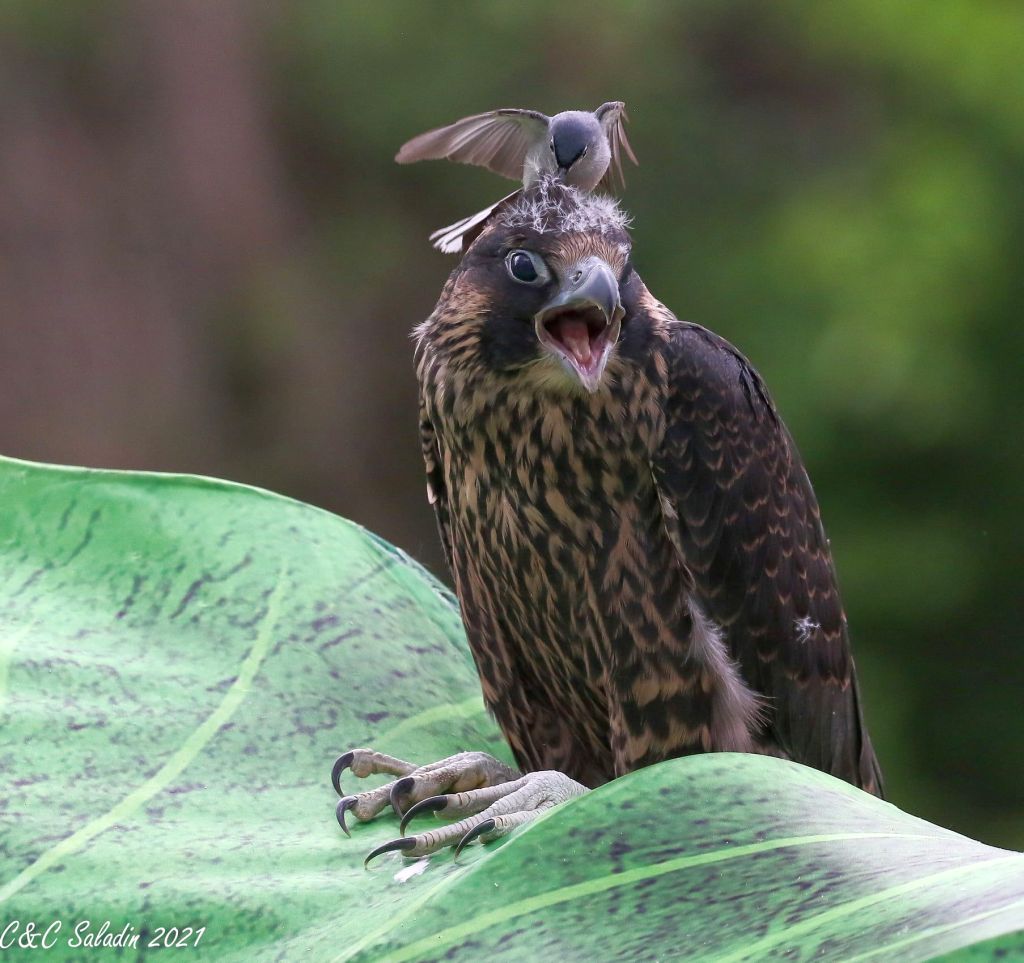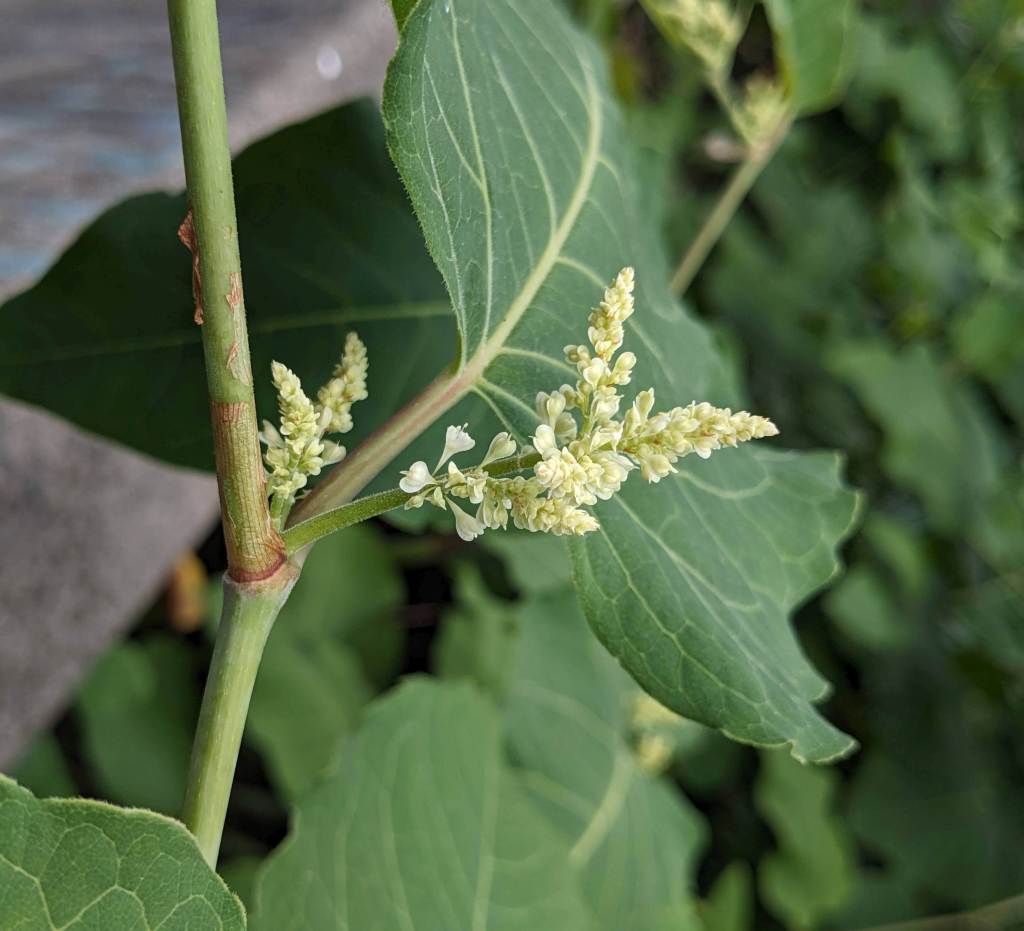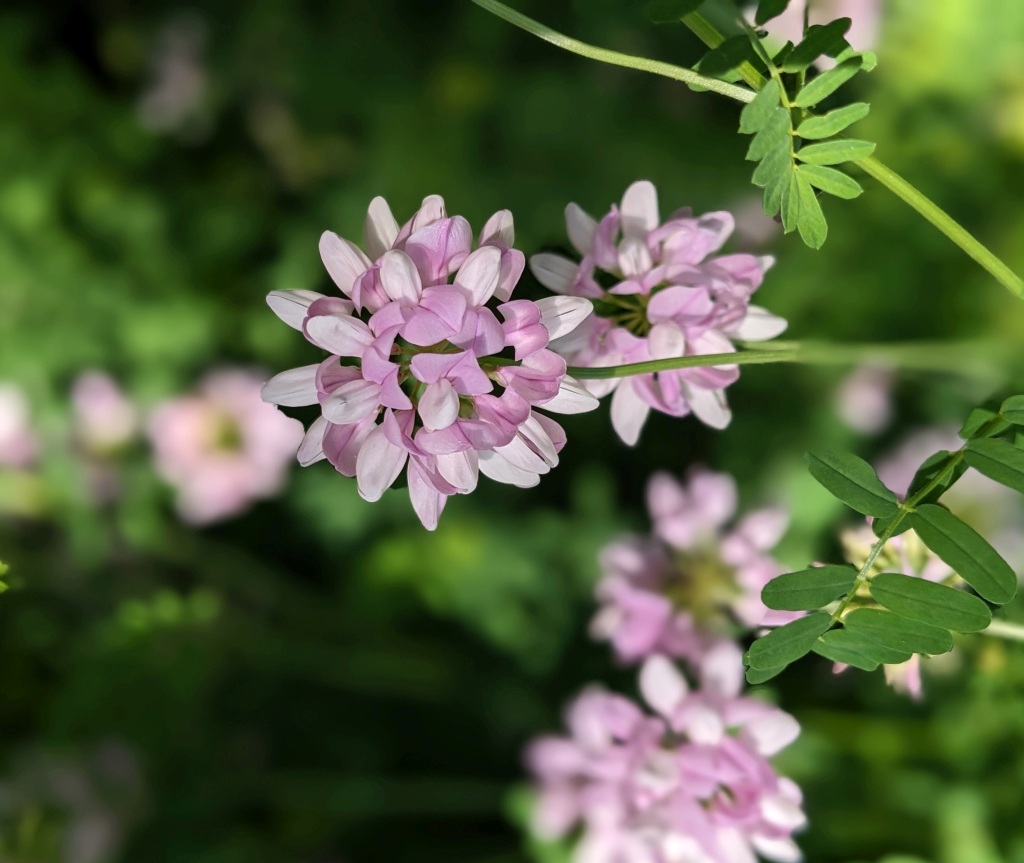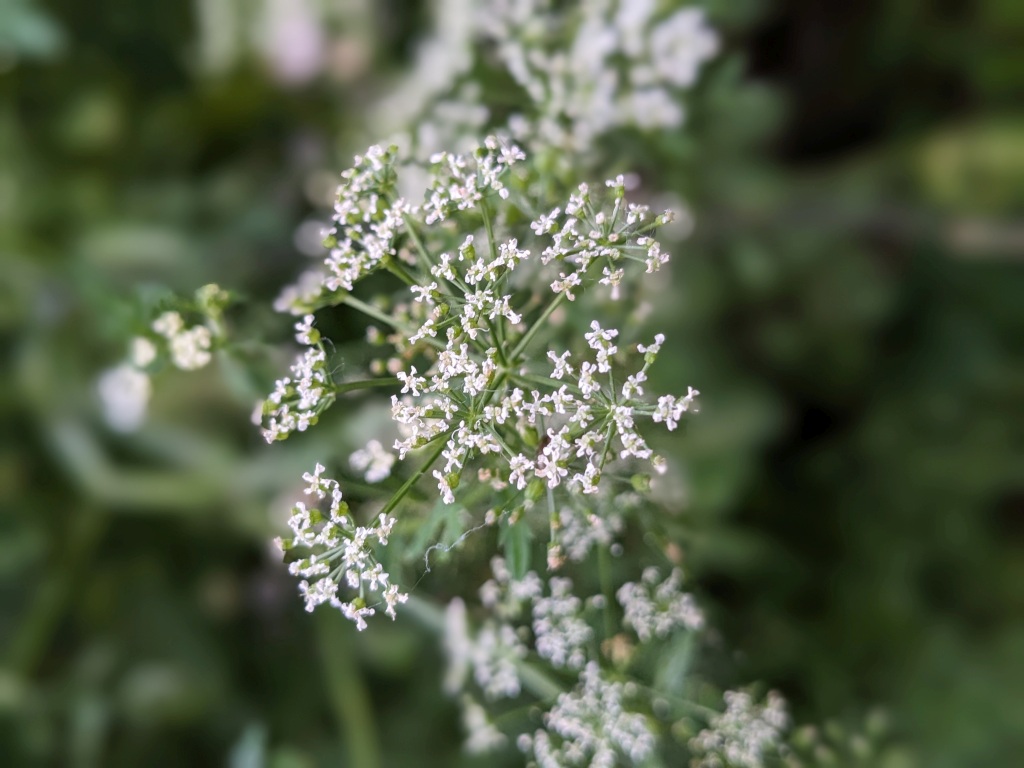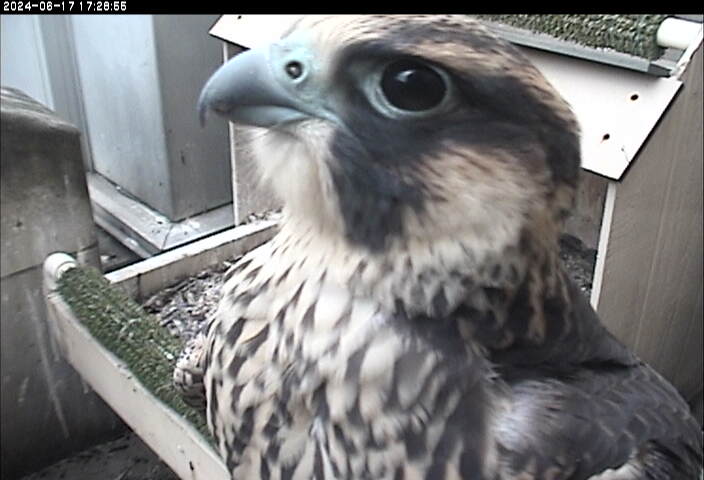
19 June 2024
It’s been eleven days since my last regional peregrine update. Here are just a few of the sites. More to come in the days ahead.
Cathedral of Learning, Univ of Pittsburgh:
The juvies have made a lot of progress since 11 June when Liz Adams took this photo of one of shouting from the 32nd/33rd floor parapet. Such a lazy bird! On its belly demanding room service! It eventually flew away toward Carnegie Museum.
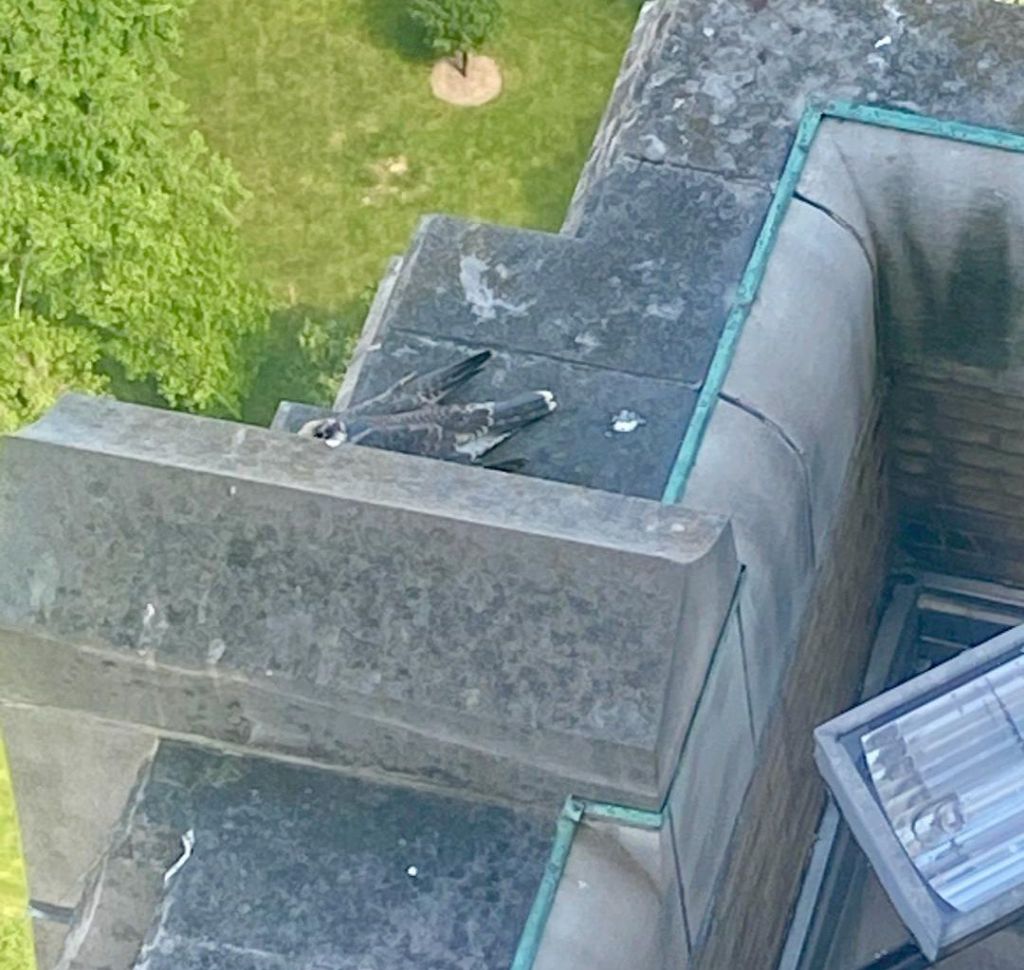
This week both juvies harassed a crow at Bayard and Bellefield and chased their parents around the top of the Cathedral of Learning. By the time I snapped this photo they were out of the frame.

They’ve learned how to hunt at this point but it’s a lot harder than wheedling food from their parents. On Monday they figured out that Ecco hides from them at the nest so they both invaded. Ecco shouted and left immediately. See the slideshow of their antics.
Juvenile Pitt peregrines invade the nest, 17 June 2024 (photos from the National Aviary snapshot camera at Univ of Pittsburgh)
Downtown Pittsburgh:
On Monday morning 10 June PGC’s Patti Barber emailed that a Downtown juvie had been rescued from the ground and placed up high again. This Monday, 17 June, Matthew DiGiacomo heard a juvie peregrine calling overhead and posted this photo of it on Pittsburgh Falconuts Facebook page.
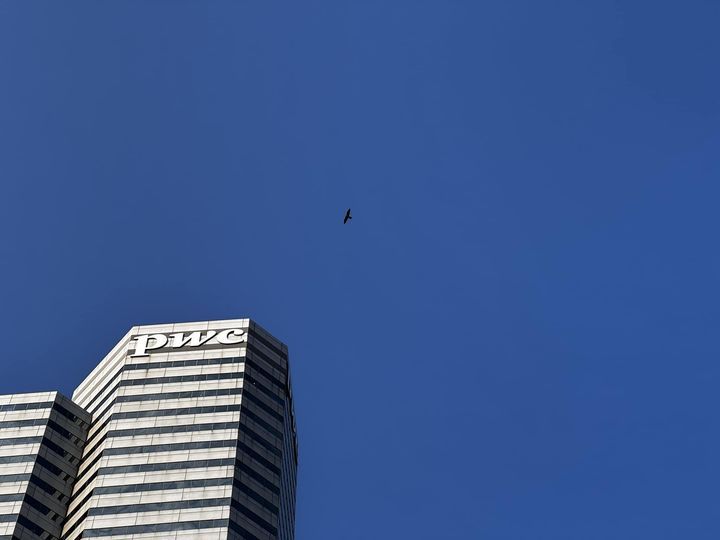
First, I heard the distinctive call. Didn’t take long to spot it soaring above the Forbes Avenue Garage.
— Matthew Digiacomo posted to Pittsburgh Falconuts Facebook page, 17 June 2024
East Liberty Presbyterian Church, Pittsburgh: No photos available but Adam Knoerzer wrote yesterday, 18 June:
In E Liberty now — the young one was definitely flapping wings yesterday and exercising, and I can’t see a thing in the nest today. The female is perched much lower than usual today on the eastern face, and I wonder if perhaps the young one tried to fledge and is somewhere on a low roof.
The female is in a decidedly unusual spot for her — and she has some prey in her clutches but isn’t eating it. I did briefly hear vocalizing, but it wasn’t very long or intense.
I guess it’s possible that the chick is lying flat due to the heat or something, but yesterday it was pretty easy to see it anywhere due to its size.
— email from Adam Knoerzer, 18 June 2024, 6pm
West End Bridge, Ohio River: On 13 June Jeff Cieslak photographed a solo peregrine at the West End Bridge. It is banded Black/Green and appears to be “xC/20”. (The “x” means I can’t read that letter. Jeff digitally flipped the band rightside up.) Did I read the band correctly? Do any of you know this bird?
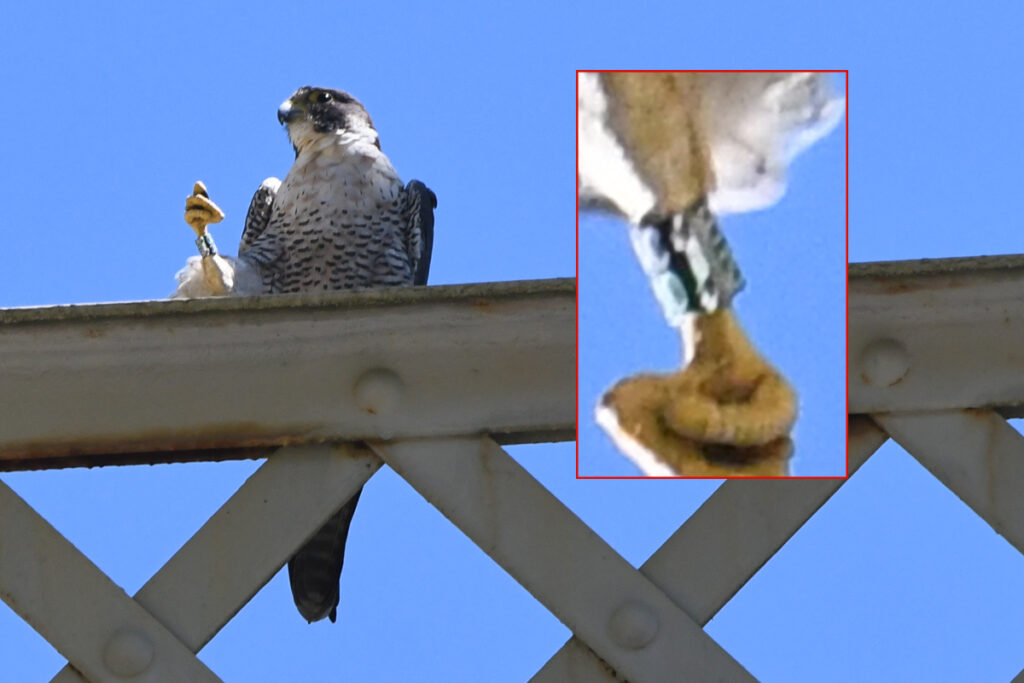
Rt 40 Bridge, West Brownsville, Monongahela River:
On 1 June five birders visited the Rt 40 Bridge to watch the peregrine family of four. When Fred Kachmarik visited on the 9th and 15th of June the two youngsters were doing well.
There is a 60% mortality rate among peregrines in their first year of life so the loss of a chick is, unfortunately, an expected outcome.


















